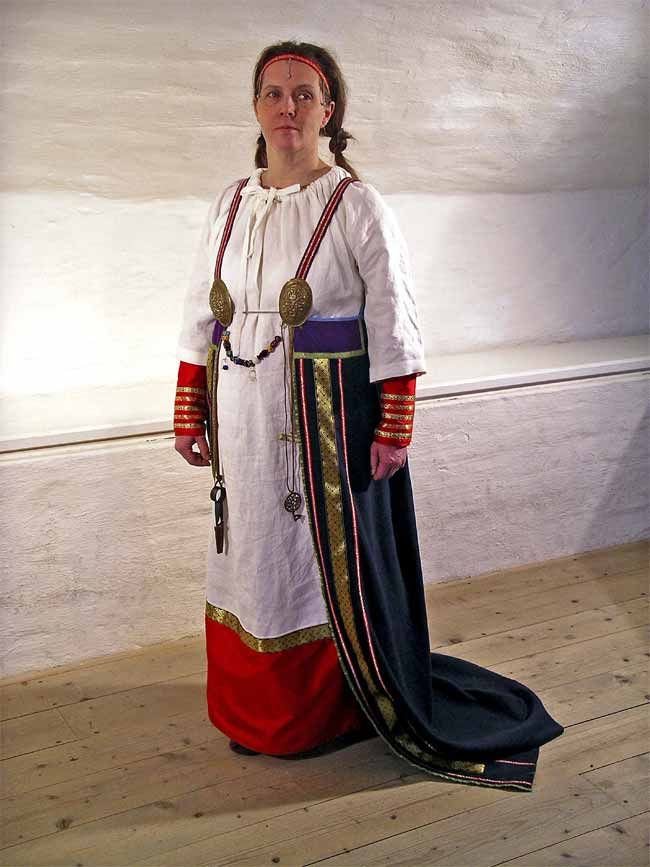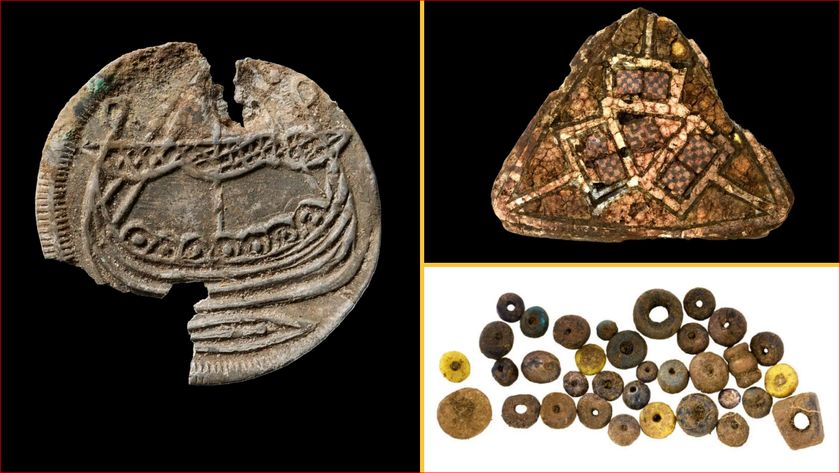Viking Women Dressed Provocatively

A runway fashion show in Viking times would have spotlighted women cloaked in imported colored-silk gowns adorned with metallic breast coverings and long trains.
This surprising claim is the result of a new analysis of remnants from a woman's wardrobe discovered in a grave dating back to the 10th century in Russia, painting a picture of Viking panache before Christianity was established that runs counter to previous ideas about buttoned-up, prudish looking Norsewomen.
"Now we can say the pre-Christian dress code was very rich," textiles researcher Annika Larsson of Uppsala University in Sweden told LiveScience. "When Christianity came, the dress was more like that of nuns. There was a big difference."
The fashion findings go beyond apparel, revealing that the Viking Age from 750 A.D. to 1050 A.D. was not uniform and might even have been sort of sexy. (The findings here apply to the Swedish Vikings, who mostly traveled east into modern-day Russia and further on to Byzantium and beyond, rather than the Danish/Norwegian Vikings who went westward).
"Textile research can tell us more about the state of society than research into traditions. Old rituals can live on long after society has changed, but when trade routes are cut off, there's an immediate impact on clothing fashions," Larsson said.
Larsson discovered a blue silk dress and associated ornaments in a grave in the Russian region of Pskov, close to Novgorod and the eastern trade routes then plied by Vikings from Sweden. She said the dress was positioned in the grave as a gift likely to be worn in an afterlife.
Until now, anthropological evidence showed a Viking woman wearing an apron on top of a linen robe. The apron consisted of two rectangular pieces of cloth, in which strings on the back panel attached to the front with brooches. The outfit was completed with an outer woolen shawl or sweater.
Sign up for the Live Science daily newsletter now
Get the world’s most fascinating discoveries delivered straight to your inbox.
The new finding reveals instead that a Viking woman's dress consisted of a single piece of fabric with an opening in the front. A pair of brooches, or clasps, was situated on top of the breasts to accentuate the wearer's figure.
"It's easy to imagine that the Christian church had certain reservations about clothing that accentuated the breasts in this way and, what's more, exposed the under shift in front," Larsson said. "It's also possible that this clothing was associated with pre-Christian rituals and was therefore forbidden" once Christianity became established.
The changes in clothes over time indicate that medieval Christian fashions hit Sweden as early as the late 900s, a time when new trade routes came into use, Larsson said. Overall, Oriental features in clothing disappeared when Christianity came and the Vikings started to trade with the Christian Byzantine and Western Europe, she said.
- Top 10 Intrepid Explorers
- Great Inventions: Quiz Yourself
- Scientists Discover Key to Fashion Trends
Jeanna Bryner is managing editor of Scientific American. Previously she was editor in chief of Live Science and, prior to that, an editor at Scholastic's Science World magazine. Bryner has an English degree from Salisbury University, a master's degree in biogeochemistry and environmental sciences from the University of Maryland and a graduate science journalism degree from New York University. She has worked as a biologist in Florida, where she monitored wetlands and did field surveys for endangered species, including the gorgeous Florida Scrub Jay. She also received an ocean sciences journalism fellowship from the Woods Hole Oceanographic Institution. She is a firm believer that science is for everyone and that just about everything can be viewed through the lens of science.



